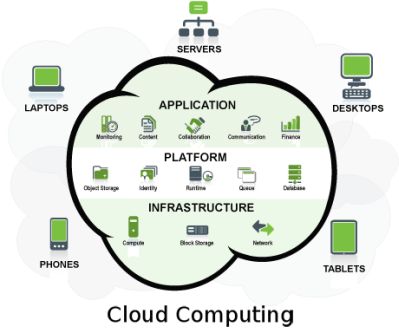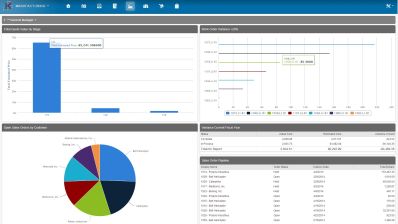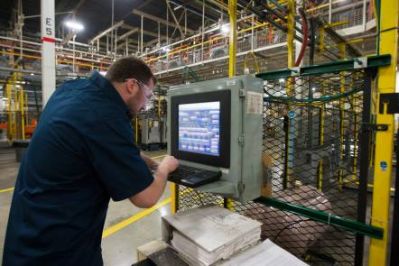 |
| November 04, 2014 | Volume 10 Issue 41 |
Designfax weekly eMagazine
Archives
Partners
Manufacturing Center
Product Spotlight
Modern Applications News
Metalworking Ideas For
Today's Job Shops
Tooling and Production
Strategies for large
metalworking plants
3 tips for moving your manufacturing operations to the cloud
The race to the cloud is on. Seventy-five percent of all manufacturers in the U.S. are either in the process of moving to the cloud or seriously researching cloud computing. The primary driver of cloud adoption is cost control, with more than 80 percent of surveyed companies reporting that they realized savings after moving to the cloud.
While moving manufacturing operations management to the cloud may be the ultimate objective, manufacturers today face daunting challenges in their current operations as well as obstacles in making the leap to the cloud. Under-utilization of expensive on-premise enterprise resource planning (ERP) solutions is a common problem. Instead of using all the features the ERP has to offer, employees are managing critical business processes on Excel spreadsheets. This practice poses grave security risks and also creates data silos, hampering organizational effectiveness.

Another common challenge for manufacturing operations with multiple locations is a lack of an end-to-end solution that is accessible to distributed facilities. Manufacturers very often operate in disparate locations, and without a comprehensive, current ERP system that everyone in the business uses, it's difficult for operations professionals and key business decision-makers to get the information they need to improve efficiency and plan for the future.
A cloud-based manufacturing operations management system delivered via Software as a Service (SaaS) would resolve these issues, which is why the industry is moving in that direction, but many manufacturers aren't in a position to jettison their current ERP implementations and make a wholesale move to the cloud right now. They may not be ready to walk away from multimillion-dollar investments in their current on-premise systems. Instead of a "rip and replace" strategy, a gradual evolution to the cloud is the best option.
How manufacturers can successfully make the leap to the cloud
Here are three approaches that can help manufacturers evolve to the cloud at a pace that works for their operation:
- Fix what's broken first: The first step is to evaluate critical business processes, identify what's not working under the current system, and migrate those processes to the cloud first. Find out which processes employees are handling on apps like Excel spreadsheets, which can expose the company to liability for a data breach and create data silos.
Also, for manufacturing businesses that have multiple locations, fixing what's broken would likely include connecting all of the various sites to the cloud to facilitate communication with headquarters and enable collaboration using the central on-premise solution.
- Find a configurable, no-code development solution: When manufacturers are in the process of migrating to the cloud, it's important to give employees solutions they can use to streamline core business processes and integrate systems. A configurable, no-code development tool allows tech-savvy employees to create their own apps (instead of waiting for years for overstretched IT teams to develop them) and configure systems to match their processes in a way that out-of-the-box solutions can't. It also protects the company by ensuring security and enabling integration.
- Maximize the on-premise system investment: Since manufacturers have invested millions in on-premise ERP implementations, it makes sense to use that investment to best advantage, and doing so is not necessarily incompatible with moving to the cloud. With the right development solution, manufacturers can evolve toward the cloud by developing cloud-based solutions that integrate with their legacy systems, focusing on the critical business processes in most need of improvement first.

The benefits of a deliberate evolution to the cloud
Industry analysts predict that manufacturing operations-management functions will eventually move to the cloud since the business case is so strong. Not only does a cloud solution eliminate costly annual maintenance and infrastructure costs, it is scalable and easily accessible from multiple locations. The cloud makes good business sense.

But many manufacturers aren't in a position to make the leap all at once. They need to extend their investments in their existing systems, and they are looking for ways to give distributed facilities new tools to improve management across locations. Meeting these requirements in today's changing business environment is a challenge; but it's also an opportunity.
A deliberate evolution that encompasses a focus on the critical business processes that most need improvement, a configurable development solution that doesn't require coding, and maximizing the investment in legacy systems is the best way to seize the opportunity and capitalize on the cloud. By evolving their manufacturing operations management to the cloud, companies can start benefiting from cloud efficiencies today while preparing to meet tomorrow's business requirements.
Want more information? Click below.
KeyedIn
Published November 2014
Rate this article
View our terms of use and privacy policy
